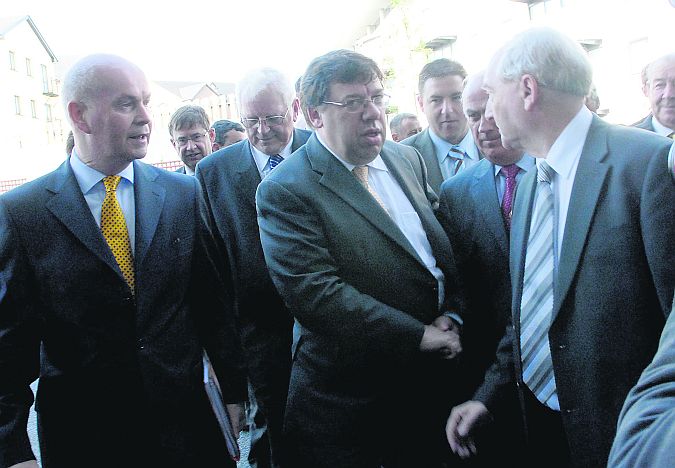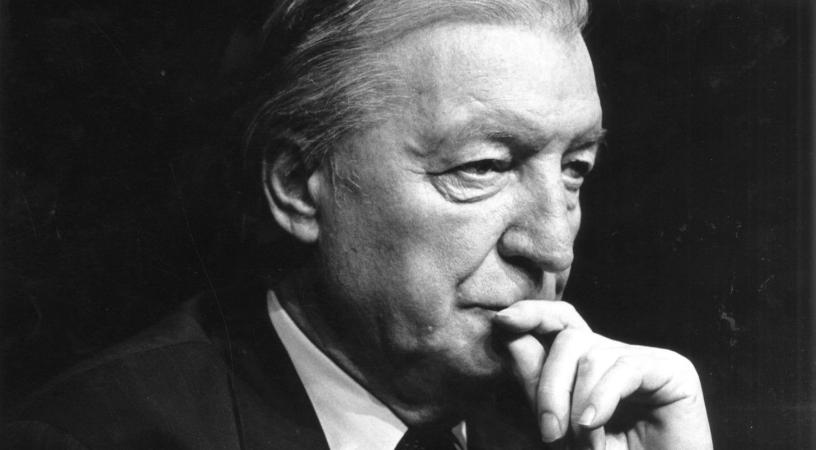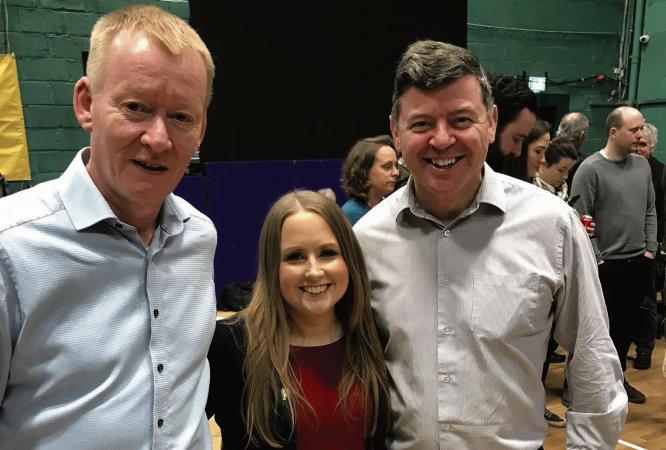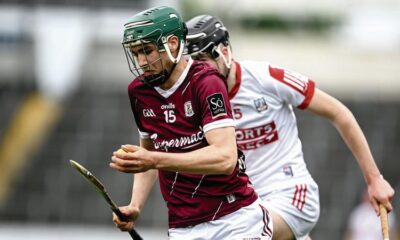Political World
Party gatherings – more drinking than thinking

World of Politics with Harry McGee – harrymcgee@gmail.com
Whenever anyone asks me to define an oxymoron, I reply: “A parliamentary party think-in”.
I don’t know who came up with the phrase but it’s so wide of the mark that you can be sure that Hawkeye will never be pressed into service.
Anyway we are stuck with the title even though there is very little thinking, though quite a bit (but not as much anymore) of imbibing, an activity which strangely enough rhymes with thinking.
The think-ins are a relatively modern phenomenon and only came into being in the late 1990s or early 2000s.
The first one I remember covering was a Fine Gael one in Killarney in September 2003. It was a very civilised affair and reminded you a little of the Fianna Fáil ones nowadays.
That was because Fine Gael had taken a fierce hammering in the 2002 election and its parliamentary party was much depleted. The big thing to emerge was a paper from Richard Bruton warning that benchmarking was going to end up costing the State over €1 billion.
He was not right. It actually ended up costing the State far more than that. It was a shoddy, unaudited and loose arrangement that was supposed to give pay parity between the public and private sectors. What happened ultimately is that the public sector raced ahead of the private sector in salaries. The deals were shrouded in secrecy.
And the quid pro quo of more productivity and flexibility never materialised in any real sense. Essentially if you were a public servant who was able to turn up at work, that seemed to fulfil the criteria. The two most remembered are to do with Fianna Fáil. The first was the one held in West Cork in 2004 in the Inchdoney Lodge.
There, Taoiseach Bertie Ahern announced a new strategy for the party and promised to take it to the left, to have a more ‘caring and sharing’ image after several years of Gordon Gekko ‘loadsamoney’ grasping in Irish society.
That was bolstered by the presence of key speaker, Fr Sean Healy of Social Justice Ireland. That new Fianna Fáil never materialised then. The irony is that because of necessity it might just materialise now.
The second memorable one for Fianna Fáil was also, unfortunately for it, its most notorious. That was in 2010 when the economy and State was in tailspin. The party – which had just not copped on to the extent of its disaster – held its think-in in the Ardilaun Hotel in Galway. Brian Cowen was already struggling with the responsibility of the role of Taoiseach. And on the first night of the conference he stayed up until the early hours of the morning with a group of buddies – as well as journalists, it must be said, who were quite happy to see him there. It culminated with him doing a couple of mimic impressions which had his audience in stitches.
Sadly, his next turn the following morning was to do an impression of a very hungover Taoiseach when he appeared on Morning Ireland and struggled to collect his thoughts. A Simon Coveney tweet suggesting the same allowed journalists to get their foot in the jamb of the door.
For more, read this week’s Connacht Tribune.
Connacht Tribune
The fine art of good timing when it comes to elections

World of Politics with Harry McGee
Academically, politics is described as a science. But in the real world, it’s more of an art – and one of the big decisions a Government has to make is to decide when to call an election.
Will they see out the full term, or will they go early – either to mitigate the damage they will ship, or to secure a victory before things go awry, or the economy takes a dip, or some kind of controversy erupts?
Timing is everything.
And there’s a bit of art to that – not to mention a lot of luck. If you call it early and win big, you’re a genius. If you call it early and lose, you are the political version of the village fool.
Charlie Haughey was a poor judge of the public mood. Twice he called snap elections and on both occasions they backfired. Haughey succeeded Jack Lynch as Taoiseach in late 1979 and did not – technically – have his own mandate. He tried to remedy that by calling an election in 1981. But it recoiled. Ray MacSharry warned him not to hold it during the H Block hunger strikes when republican prisoners were dying each day. He did not listen to the advice and found himself out of office.
After his return to power in 1987, Haughey tired of presiding over a minority government that kept on losing votes in the Oireachtas (the opposition won nine private members motions).
So he called a snap general election and it backfired. Fianna Fáil lost seats and had to broker a coalition deal with the Progressive Democrats and his long-standing political adversary Dessie O’Malley.
For more, read this week’s Connacht Tribune.
Connacht Tribune Digital Edition App
Download the Connacht Tribune Digital Edition App to access to Galway’s best-selling newspaper.
Click HERE to download it for iPhone and iPad from Apple’s App Store, or HERE to get the Android Version from Google Play.
Or purchase the Digital Edition for PC, Mac or Laptop from Pagesuite HERE.
Get the Connacht Tribune Live app
The Connacht Tribune Live app is the home of everything that is happening in Galway City and county. It’s completely FREE and features all the latest news, sport and information on what’s on in your area. Click HERE to download it for iPhone and iPad from Apple’s App Store, or HERE to get the Android Version from Google Play.
Connacht Tribune
Inch protest arguments are more subtle than Oughterard

World of Politics with Harry McGee
I was cycling down Mount Street in Dublin on Tuesday. It’s a wide esplanade that links the Grand Canal with Merrion Square. The street is a mixture of fine Georgian buildings and modern office blocks.
About half-way down is the office of the International Protection Office, which deals with asylum seekers who have arrived in the country.
Needless to say, the office has been overwhelmed in the past year. Besides an estimated 80,000 refugees who have arrived from Ukraine, there have been about 20,000 people from other parts of the world who have arrived into Dublin (mostly) claiming asylum.
The numbers peaked around Christmas, but they have been falling a little. In January, more than 1,300 people arrived seeking asylum but the numbers fell back to 831 and 858, in February and March respectively.
They are still huge numbers in a historical context.
So back to my cycle on Tuesday. I knew that some asylum seekers were camping outside the International Protection Office, but I was taken aback by how many. There were six tents lined up on the pavement directly outside. Then on the ramp that led down to the basement carpark on the side of the building, there were about another 20 tents.
It looked like what it was, a refugee camp in the middle of Dublin’s business district. If you pan out from Mount Street, you will find tents here and there in nearby streets and alleys. There were a good few tents in an alleyway off Sandwith Street about 500 metres away.
For more, read this week’s Connacht Tribune.
Connacht Tribune Digital Edition App
Download the Connacht Tribune Digital Edition App to access to Galway’s best-selling newspaper.
Click HERE to download it for iPhone and iPad from Apple’s App Store, or HERE to get the Android Version from Google Play.
Or purchase the Digital Edition for PC, Mac or Laptop from Pagesuite HERE.
Get the Connacht Tribune Live app
The Connacht Tribune Live app is the home of everything that is happening in Galway City and county. It’s completely FREE and features all the latest news, sport and information on what’s on in your area. Click HERE to download it for iPhone and iPad from Apple’s App Store, or HERE to get the Android Version from Google Play.
Connacht Tribune
Sinn Féin hunt for seats in ‘locals’ across Galway

World of Politics with Harry McGee
God that was a dramatic and historic weekend in England, wasn’t it? So much excitement, so much change, so much hype, so much out with the old and in with the new, and what looks like the coronation of a new leader. Yes, the local elections in Britain were something else weren’t they!
Apologies for not going on about King Charles III but the contract I signed when I became a lifelong republican forbids me to discuss the topic!
I know the British local elections sound a bit boring by comparison, but the results were stunning.
The Conservatives lost nearly 1,000 seats, the British Labour Party gained almost 500 and both the Lib Dems (with 350 gains) and the Greens (gaining over 200) also had amazing days at the polls.
It was Labour’s best day since 2002 but its victory was only partial. The Greens and the Lib Dems actually made gains at the expense of Labour in more affluent areas, and in parts of Britain where there were high numbers of graduates.
It was in the Red Wall constituencies in the North of England where the Labour recovery was strongest. These are working class constituencies with pockets of deprivation where people voted for the Labour Party forever. But all of those constituencies voted for Brexit and then voted for the Tories in the next general election. Labour is now winning back some of those votes.
Local elections are classified as second-tier elections which essentially means – from a national perspective – they are not life-or-death affairs, and not everything turns on them. Of course, it’s really important to have good local representation. But they are not an amazing weather vane for who rules the country.
For more, read this week’s Connacht Tribune.
Connacht Tribune Digital Edition App
Download the Connacht Tribune Digital Edition App to access to Galway’s best-selling newspaper.
Click HERE to download it for iPhone and iPad from Apple’s App Store, or HERE to get the Android Version from Google Play.
Or purchase the Digital Edition for PC, Mac or Laptop from Pagesuite HERE.
Get the Connacht Tribune Live app
The Connacht Tribune Live app is the home of everything that is happening in Galway City and county. It’s completely FREE and features all the latest news, sport and information on what’s on in your area. Click HERE to download it for iPhone and iPad from Apple’s App Store, or HERE to get the Android Version from Google Play.












